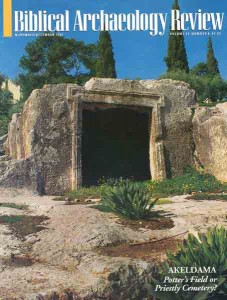How to Read MMT
Sidebar to: For This You Waited 35 Years
One of the fascinations of this text is the entry it provides into the sometimes arcane world of scholarship. Simply reading this text will probably make little sense. The challenge is to understand what the reconstructed text consists of and then to tease out its implications.
MMT consists of three parts: (1) a calendar, consisting of lines numbered 1–21; (2) a section of laws, consisting of the second set of lines, numbered 1–82; and (3) an epilogue, consisting of the third set of lines, numbered 1–32.
Fragments of six separate copies of MMT were found at Qumran. They are designated in two ways: First, by 4Q numbers (indicating they come from Qumran Cave 4); these are 4Q394 through 4Q399. Second by letter, a through f.
In the left margin, the source of the text is indicated by letter and by 4Q number (in parenthesis). Thus, the first 18 lines of the calendar come from copy a, which is equal to 4Q394. The numbers following the 4Q number identify columns and lines.
Often part of the text is repeated in more than one copy of MMT found at Qumran. The additional copy (or copies) is indicated in the left margin in parentheses. Thus, the first 16 lines of the laws come from copy a, as supplemented by copy b. Note that b is underlined. This is to indicate that the part of the Hebrew text that is underlined is found in copy b, rather than copy a. Occasionally, a third copy is also used to reconstruct the main text. The third copy is indicated by outlined letters and text; see, for example, line 42 of the laws.
Already a library member? Log in here.
Institution user? Log in with your IP address.

